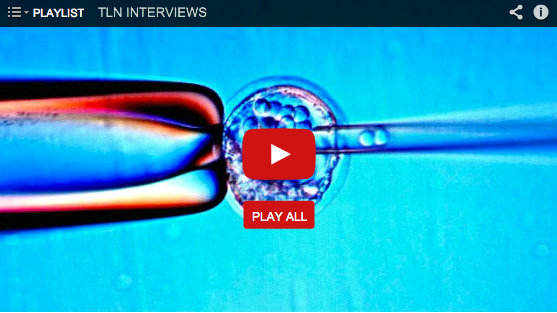Stem Cell Pioneers featured Dr. Riordan in its February installment of “Ask the Doctor”, a monthly segment that features stem cell scientists and doctors answering questions from readers about stem cell therapy.
Over the next several days, we will share these questions and Dr. Riordan’s answers with our readers.
Question: Are there some conditions such as neurological ones that respond better when the cells are greatly expanded? Is a high quantity essential for success or is that something that may be more of a selling point at some clinics? I have also seen this advertised for COPD and other conditions. It’s almost like the more cells the better, but I would like your opinion.
Dr. Riordan’s Answer: That really depends on the quality of the cells after expansion. If they are still robust, not senescent, and still have a good secretion profile, then the more the better may be useful up to a point. If you take a small pool of starter cells and expand them to exhaustion, then I don’t think you are going to have a very good product. The MSCs used in Panama are not expanded beyond passage 5—a point at which there is no senescence in the population and they have a robust cytokine secretion profile. In order to use only cells that meet our release criteria, cells from approximately one (1.2 to be exact) out of 10 donated umbilical cords are used.
Contrast that to cells from a patient’s own fat tissue that are expanded. Firstly, the starting cells may, and many times are not very robust—they secrete little or no beneficial cytokines or chemokines, and must be expanded to hilt in order to hit the cell number. Please see my answer to number 7 for more on this subject.
This brings up a slightly different, yet related topic. There has been a lot of talk at recent meetings about more defined endpoints for the cells being used, and I couldn’t agree more. There are MSCs from bone marrow, menstrual blood, fat tissue, umbilical cord (even different parts of the umbilical cord—around the blood vessels, from the Wharton’s jelly, from the subepithelium, from the cord blood itself—which are most likely contaminants from a bruised placenta rather than the blood), teeth, amniotic membrane, amniotic fluid just to name sources in the “we didn’t mess with mother nature” adult stem cell world. Add to that the infinite variables when you consider the age and physical condition of the donor, particularly when using adipose or bone marrow as a source material and we, as a field, could be saying almost anything by using the term, “mesenchymal stem cell.” I think it is time that there is standardization in the field beyond the current definition of expressing/not expressing certain surface markers and the ability to differentiate into fat, bone, and cartilage. That standardization could come from using endpoints such as “remaining proliferative capacity (the number of doublings achievable in culture from the treatment cell bank), the secretome, even if there is standardization of one or two molecules, such as HGF, or one of the prostaglandins.
In the future I believe the field will take it a step further by measuring, even by a surrogate marker, the potential effects of the cells on the target condition. In the case of autoimmunity the cells and their secretions could be tested for their capacity to modulate the immune system. In the case of inflammatory conditions, the cells and their secretions could be tested for the ability to control or block inflammation.


 Judi Lecoq
Judi Lecoq SammyJo Wilkinson
SammyJo Wilkinson  Jennifer Ziegler
Jennifer Ziegler Holly Huber
Holly Huber Fiona Sparrow
Fiona Sparrow Annette Williams
Annette Williams Carla Hickman
Carla Hickman  Kane Roper
Kane Roper Richard Humphries
Richard Humphries
